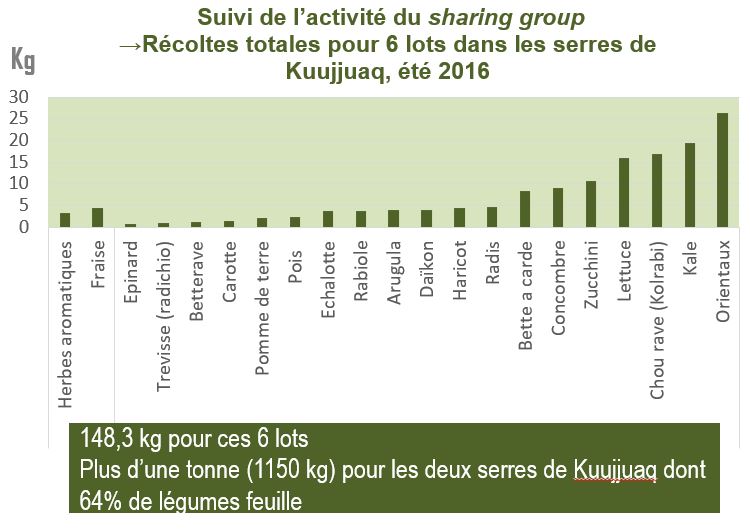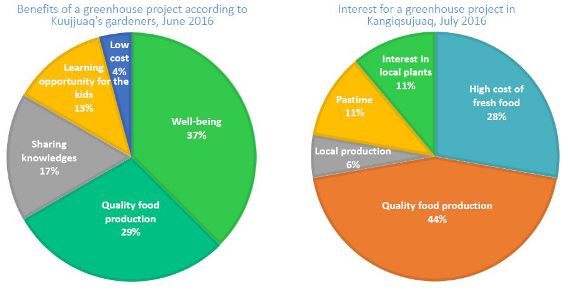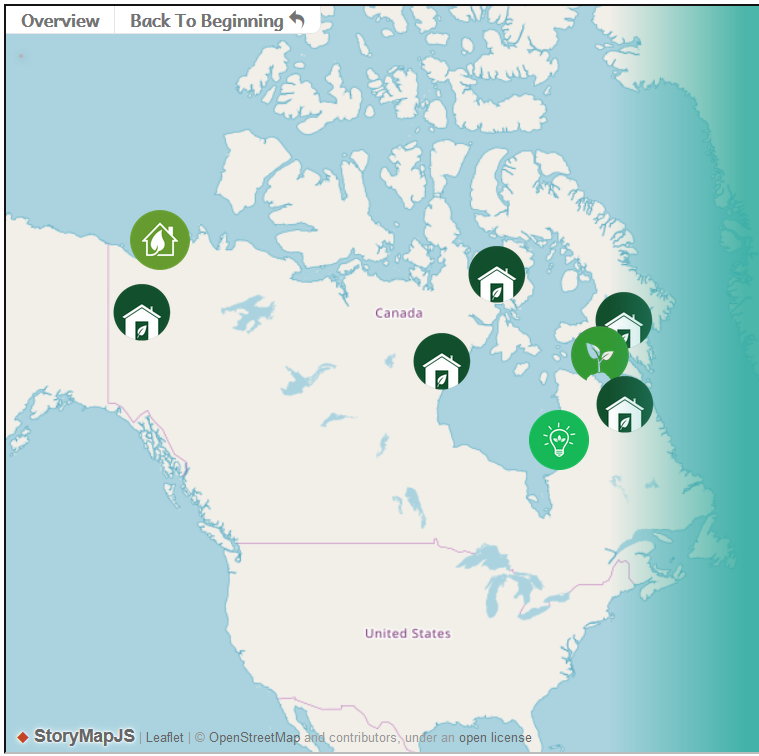NIQILIRINIQ project (Food Systems): Investigating relationships between food, the environment, and health in Nunavik to explore potential solutions for future food sovereignty and security
Project co-led by Thora Herrmann et Véronique Coxam
In the Arctic, a dramatic transformation in lifestyles has led to its inhabitants losing a considerable degree of the control they exert over their food supply, alongside a lack of access to knowledge about new foods that have been introduced in their nutritional landscape. In Kuujjuaq and Kangiqsujuaq, the NIQILIRINIQ project (which means ‘taking care of food’ in Inuktitut) is exploring the perceptions the people of Nunavik have about their current food system: its flaws as well as possible solutions they can identify to improve access to food that is satisfying in terms of their health and their well-being. While Arctic cultivation is considered an innovative potential approach, how much can the development of local food production really contribute to food sovereignty in Nunavik? What future scenarios could be envisaged for this type of production and its role in a holistic food strategy?
Interview with the members of the Niqiliriniq project 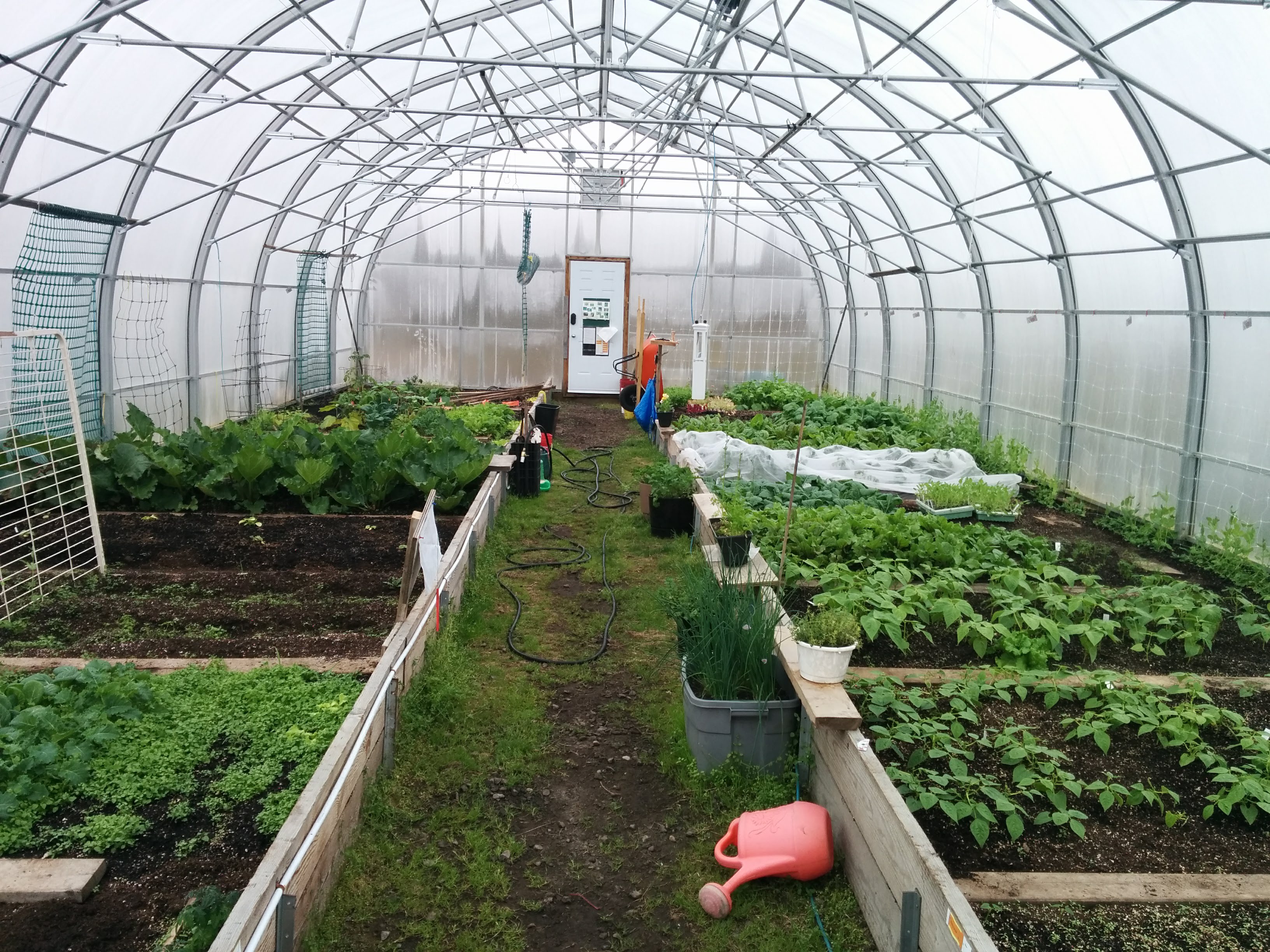
- How did the project come about?
Faced with issues of food insecurity and the loss of food sovereignty due to a decrease in access to traditional food, a decline in food quality and freshness, and an increase in diet-related diseases, several community-based projects promoting the local production of fruits and vegetables have been initiated in Nunavik in recent years. The NIQILIRINIQ community-based participatory research project was launched in 2015 and was informed by the results of a local greenhouse project co-led by Ellen Avard and several members of the local Kuujjuaq community. The project brings together members of the Kuujjuaq and Kangiqsujuaq villages and several researchers from different fields whose shared goal is to develop knowledge and practices concerning crop production in Arctic climates.
- Which communities are concerned?
In Kuujjuaq, the community greenhouse project will soon celebrate its 10th anniversary, and its popularity continues to grow – to such a degree that the available space is no longer sufficient given the increasing number of gardeners. In Kangiqsujuaq, the community has expressed a wish to start its own community gardening project, and our team has been supporting them in this process since 2015. In both villages, we have taken advantage of these local production initiatives as an opportunity for collective reflection on the community’s entire food system, including the challenges related to having different supply sources and the factors that favor or disadvantage food sovereignty in Nunavik.
- Who are the stakeholders and team members?
The main stakeholders in Kuujjuaq are the greenhouse committee led by Marc-André Lamontagne and the Regional Health and Social Services Authority of Nunavik, in particular, the nutritionist Léa Laflamme. In Kangiqsujuaq, the team works closely with the local municipality, in particular, Elijah Ningiuruvik (Manager), Alasie Qumaaluk (Project Coordinator) and Pasa Kiatqinaq (Treasurer), as well as the teaching staff and administrators of Arsaniq school, including its director, Dany St-Hilaire.
The NIQILIRINIQ project consists of six female researchers, students and graduates:
- Thora Herrmann (project co-leader and associate geography professor at the Université de Montréal)
- Véronique Coxam (project co-leader and research director at the French National Institute of Agricultural Research, INRA)
- Annie Lamalice (2015 doctoral student specializing in food sovereignty and security in Nunavik)
- Sylvie Blangy (co-director of the Nunavik Human–Environment Observatory and researcher at the CNRS Centre for Evolutionary and Functional Ecology, CEFE)
- Marion Macé (Master’s in environmental assessment at the Université de Concordia)
- Géraldine Laurendeau (Master’s student in geography at the Université de Montréal)
- What is your approach? How are you working with the local community?
This community-based participatory research project takes an interdisciplinary approach in order to grasp the interrelationships between health and the environment in a holistic way, by taking into account the social, cultural, ecological and spatial repercussions of a changing food system. The NIQILIRINIQ project focuses on the entire Inuit food system and the potential of producing food locally as one aspect of a more global solution that aims to ‘repair’ the rupture in human-environment interactions.
The project has five main objectives:
- 1. To consolidate data to achieve better statistical power for previously obtained results
Since 2015, a traceability study of greenhouse crops (description and weight of yields) and their nutritional impact has been in progress in Kuujjuaq, as well as data collection concerning greenhouse cultivation and nutritional health in Kangiqsujuaq.
- 2. To characterize and analyze the food system in Nunavik
The creation of mental maps related to food sources and supply strategies and the carrying out of semi-structured interviews and questionnaires are in progress in order to analyze the perception and social representation of the food systems of the inhabitants of Kuujjuaq and Kangiqsujuaq.
- 3. To identify opportunities for action and co-construct future scenarios
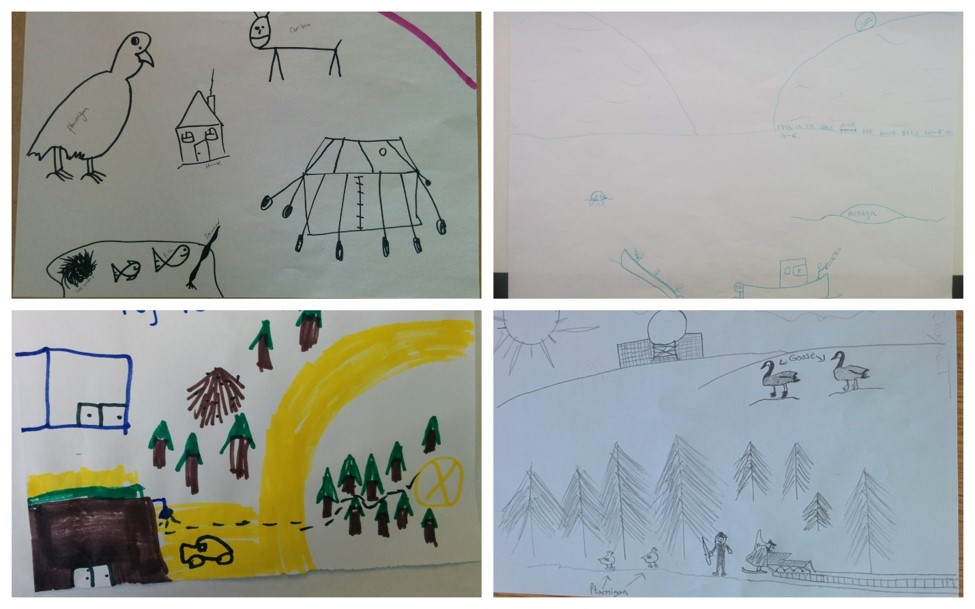
Several participatory action research workshops and semi-structured interviews have taken place for collective reflection on potential solutions and opportunities that can be envisaged to ensure a healthy, balanced and sufficient diet, including the emerging effects of local food production on the current Inuit food system.
- 4. To develop interactive maps and create content for the website
Two interactive maps related to different local food production initiatives in the Great Canadian North and Inuit food systems are being developed. A website (Polarharvest.com) and a Facebook page are being created in order to make the co-produced content accessible and to offer the communities a forum for discussion around Arctic agricultural practices (in collaboration with the SEQINEQ project).
- 5. To aid decision-making and action via a conceptualization process
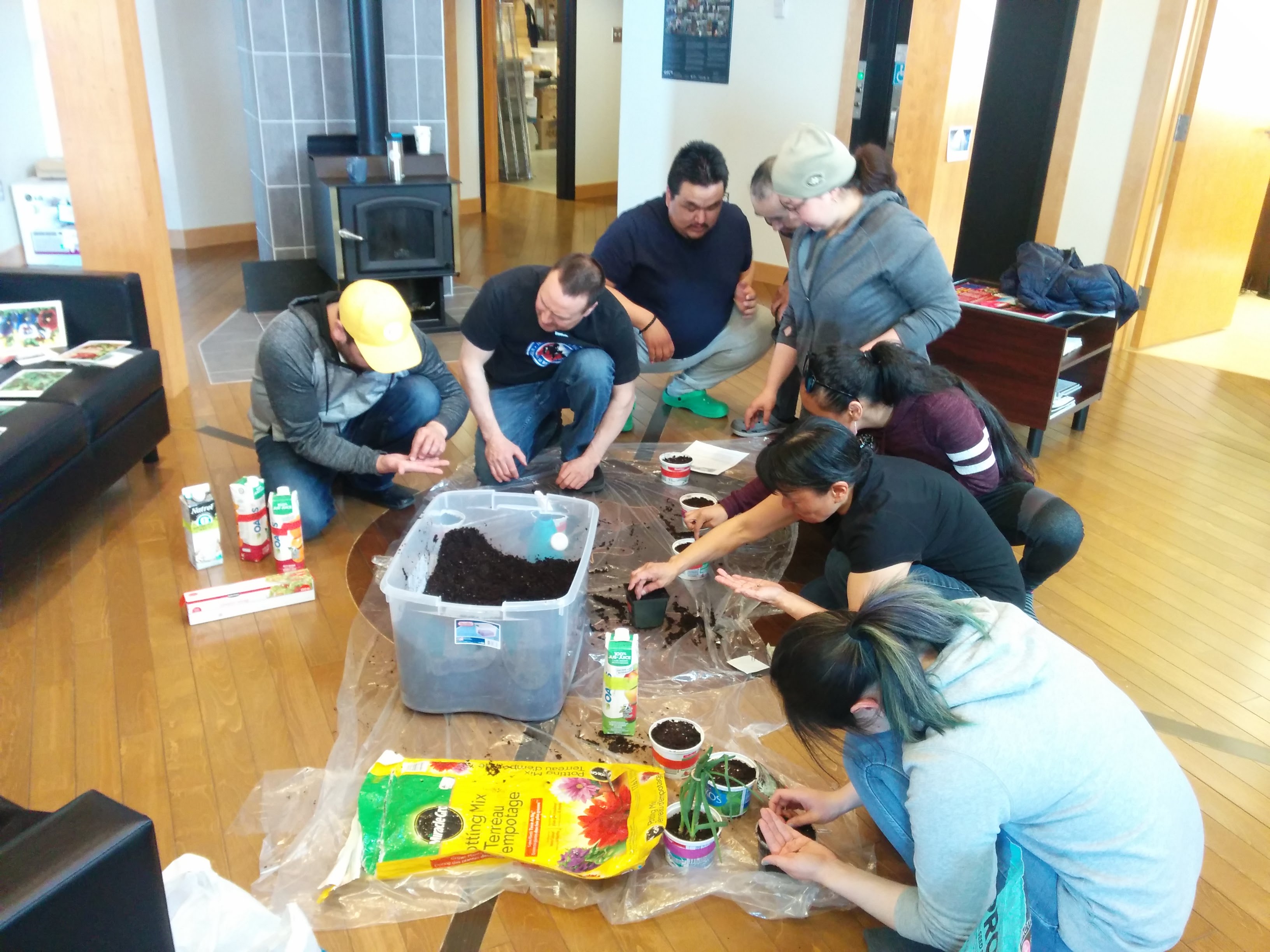
A survey of policymakers and organizations involved in the issue of food security at local, regional, national and international levels is being organized in order to contextualize the observed changes. Sharing the data collected in the NUNA and NIQILIRINIQ projects aims to provide a global vision of the links that tie the Inuit to their territory.
To support the communities in their local food production initiatives, several awareness-raising workshops on gardening and cooking have been offered in schools and various other settings in Kangiqsujuaq and Kuujjuaq (e.g. the town council, the Elder’s Home, the Makivik Corporation).
- What are the results so far?
A review highlighting the strengths, weaknesses, and challenges of food supply for Nunavik residents in terms of food sovereignty and security and the range of different food systems available has been produced and will allow recommendations to be formulated.
An interactive map of Arctic gardening projects in Canada has been created and incorporated in the website. Its aim is to share as widely as possible key information on horticultural initiatives and to put the project coordinators into contact with each other, as well as provide them with the results of the collected data. The implementation of these tools (i.e. interactive map, website, and Facebook page) was conceived to allow easy access to the co-produced information so this could serve in decision-making.
Following the gardening workshops held during the winter of 2018 and the construction of mini-greenhouse planters (with transparent covers) during the autumn of 2017 with the students of the Kangiqsujuaq school, the first growing season in the community was able to start in the summer of 2018. Four planters were installed next to different establishments (the town council, the land corporation, the Elder’s Home and the health clinic), allowing the production of vegetables (e.g. lettuce, peas, green onions, carrots), small fruit (e.g. strawberries) and local plants (e.g. qunguliit, or mountain sorrel). This first cultivation experiment created interest and strengthened the motivation of the Kangiqsujaq village members involved in the project, thus paving the way for new potential collaborations and the development of the project on a larger scale next year.
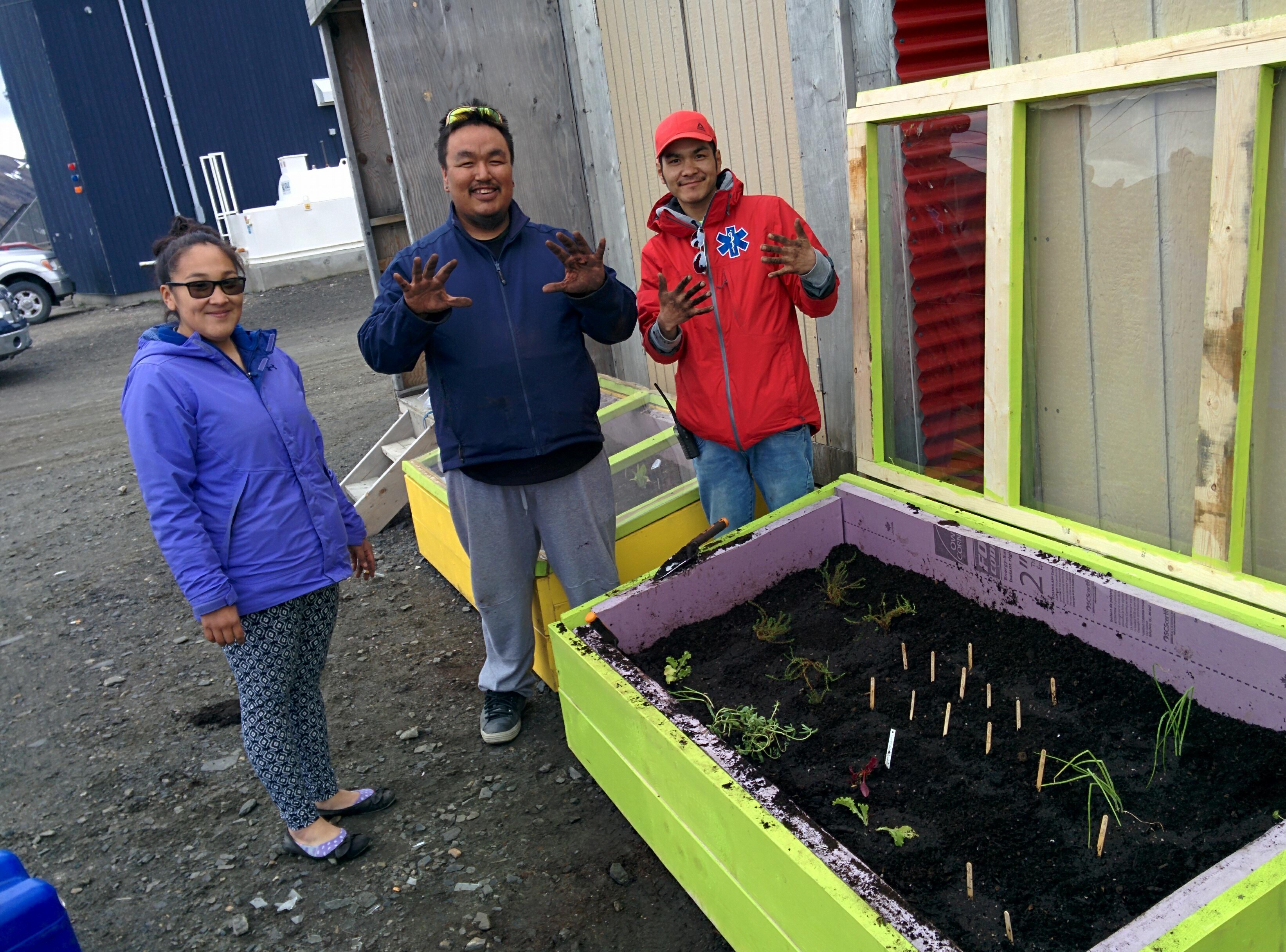
- Can you single out any key highlights?
Our participatory and collaborative approach corresponds to the aim of the Nunavik Human–Environment Observatory to work alongside communities according to their own priorities. The implementation of horticultural projects is part of a global community-based approach that aims, in time, to improve Inuit health and well-being. Over the last three years, our team has developed close ties with other Nunavik Human–Environment Observatory research projects (e.g. SEQINEQ, NUNA, AQUABIO, etc.), as well as with local and regional organisations such as the village of Kangiqsujuaq, the Nunavik Regional Health and Social Services Authority and the Makivik Corporation (e.g. the Research Centre and the Department of Economic and Social Development). The project is aligned with the policy that launched the Nunavik Human–Environment Observatory, which is the application of the Plan for the Economic Development of the Arctic region in Québéc.
Close collaboration was developed in 2017 with the SEQINEQ project, which is in line with the first goal of this plan: ‘Industrial development, sustainable development, and renewable energy sources’. Results of this collaboration include a joint article published in the Ecoscience journal in 2018 and the creation of a joint website on the two projects.
- Links to websites and publications created for this project
Presentation of the Pirursiaq Project
Web site of the project: Polar Harvest
Facebook Page of the Project du projet: Polar Harvest Community
Unpointcinq.ca: Un vent de fraîcheur souffle sur le Grand Nord

